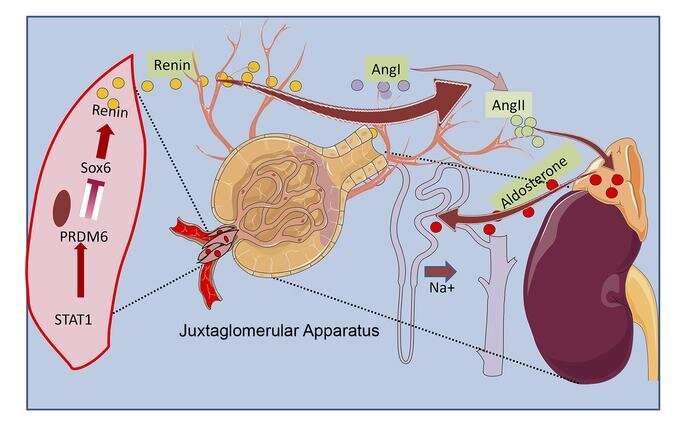This article has been reviewed according to Science X's editorial process and policies. Editors have highlighted the following attributes while ensuring the content's credibility:
fact-checked
peer-reviewed publication
trusted source
proofread
A therapeutic target for high blood pressure control

Yale researchers have identified a potential target for the development of antihypertensive drugs.
Arya Mani, MD, Robert W. Berliner Professor of Internal Medicine (Cardiology), professor of Genetics and director of the Yale Cardiovascular Genetics Program, and the study's senior author, identified a genetic defect that can cause high blood pressure or hypertension in vivo.
The findings were published on Jan. 5 in The Journal of Clinical Investigation.
Hypertension is a modifiable risk factor for heart disease and contributes about $131 billion annually to the cost of healthcare services according to the Centers for Disease Control and Prevention. Almost half of the individuals with hypertension or conditions linked to blood pressure are unable to reach a target blood pressure below 120/80 mmHg. A broader understanding of disease pathways driven by genetic research may lead to better treatments.
Using data from genome-wide association studies for hypertension and high throughput assays, they established the role of PRDM6 in the regulation of blood pressure. By generating different transgenic mouse models, Yale scientists were able to show that the PRDM6 gene plays an essential role in restraining the number of renin-producing cells during embryonic development. Renin is an enzyme produced in the kidney and if elevated can cause hypertension. Aliskiren, a renin inhibitor, was able to normalize the blood pressure.
The genome-wide association study (GWAS) has already generated interest in the scientific community. Earlier this year, Trojan Rugira, Ph.D., a postdoctoral associate at the Yale Cardiovascular Research Center, presented a late-breaking oral abstract on this topic at the American Heart Association's Scientific Sessions.
"For this study, we identified PRDM6 as the causal gene for a genome-wide association locus and established a link between PRDM6 mutation and the development of hypertension in vivo," said Mani.
The research team will continue to study the developmental role of PRDM6 in blood pressure regulation.
"Since PRDM6 is an epigenetic regulator, understanding how it causes the disease can provide insight into how environmental factors can influence blood pressure," Mani commented.
More information: Kushan L. Gunawardhana et al, A systems biology approach identifies the role of dysregulated PRDM6 in the development of hypertension, Journal of Clinical Investigation (2023). DOI: 10.1172/JCI160036





















